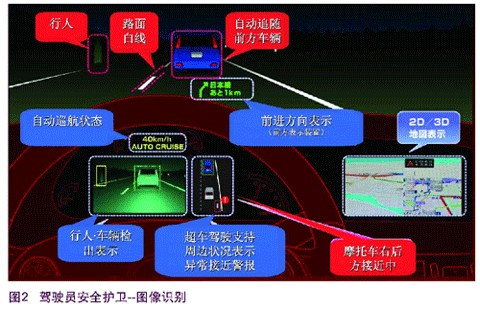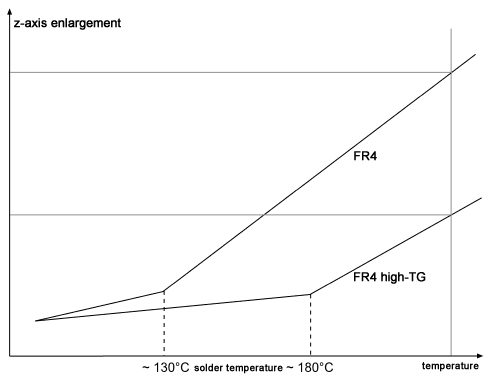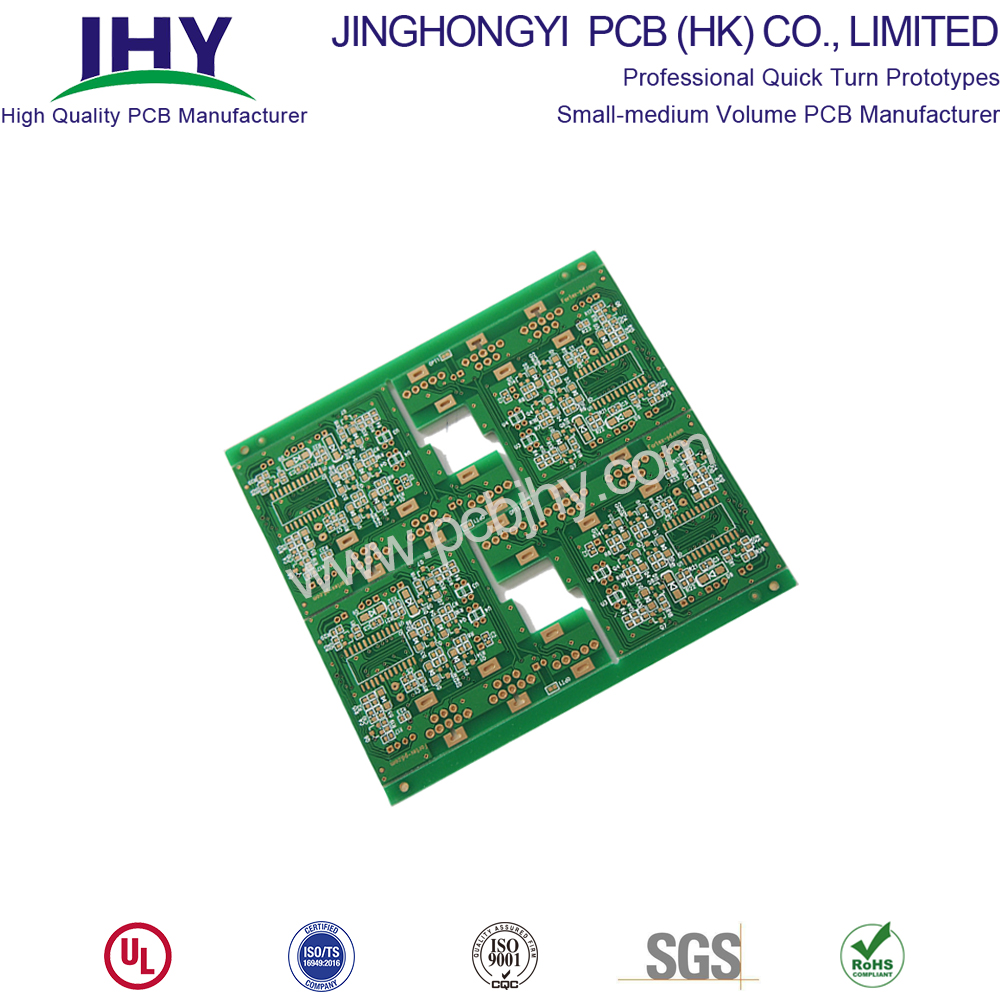In the issue of ensuring the safety of drivers and passers-by, the proportion of electronics technology has increased. According to the survey, 80% to 90% of traffic accidents are caused by driver's cognition and misjudgment. The use of sensors, on-board cameras and navigation systems to obtain road information to the driver, reduce driver's judgment errors, avoid traffic accidents, and thus reduce the occurrence of casualties, which is the theme and goal of the vehicle safety system in the future. LSIs for FlexRay, image processing LSIs for in-vehicle cameras, and linkage devices for navigation systems are key components of future in-vehicle safety systems. In the future, Renesas will provide the necessary electronic equipment to the vehicle safety system.
This article refers to the address: http://
From "impact safety (passive safety)" to "safety prevention (active safety)"
What has always been valued is the safety of impact. The goal is to minimize the level of damage in the event of an accident. Representative examples are: airbags, head protection cushions, seat belt pre-stretching, body impact absorption properties, etc.
The future development trend is "safety prevention", that is, "preventing problems before they happen." At this stage, ABS (Anti-lock Braking System), VDC (Vehicle Dynamic Stability Control System), etc. have already been put into use. In the continuous development of vehicle safety systems, the impact warning system, the impact mitigation braking system, the LDWS (lane departure warning system), and the road information warning system from the navigation system will be put into use one after another.
FlexRay network
Among the main technologies of the in-vehicle safety system in the future, the in-vehicle network FlexRay has been widely concerned. Compared to today's mainstream CAN, FlexRay is characterized by its high speed and high reliability. FlexRay plays a vital role in future in-vehicle electronic control systems that control the steering wheel, brakes, and body stability. Renesas has joined FlexRay's standardization research community to drive LSI (Flexu bus driver with built-in FlexRay controller) for FlexRay to production as soon as possible (Figure 1). The development of SiP (System in Package) for packaging MCU and bus driver will be launched soon.

Image processing technology for car cameras
Another important technology for future vehicle safety systems is the image processing technology of on-board cameras.
Today's cars are equipped with a variety of sensing technologies, such as weather sensing and driving distance sensing. The car camera with image processing technology can combine all of the above functions.
In the future, the vehicle safety system will also be equipped with technical devices such as lanes and vehicle identification cameras, infrared cameras, rear camera cameras, and instant inspection cameras. To improve safety, a car will carry more than 10 cameras. Automakers are now developing doze detection and alarm devices for in-vehicle surveillance cameras, as well as techniques for driving off lane warnings when there are surveillance cameras in front (Figure 2).

Here, image processing technology is very important: the image signal sent by the camera is processed to take out the necessary signals. By analyzing the edge portion of the image, it is possible to detect the vehicle and the lane ahead. Through road detection, it is also possible to alert the lane departure behavior. Renesas is providing image processing technology combining image processing LSI and 32-bit microprocessor SH-4A.
Linkage with car navigation system
Informing the driver of the poor road conditions and reminding them of their attention is also an important part of “safety preventionâ€. The high-performance car navigation system can inform the driver of road construction and other information through the stored map information, and can record the large drop, road fluctuation, sharp turn and other information recorded by the on-board electronic control system while driving on the road. On the GPS repository, the driver can be alerted next time you come to the location. If the road condition is rectified in the next road, the system will automatically correct the information record. In the market for microcontrollers for car navigation systems, Renesas accounts for 60% of the world's share and 80% of Japan's share. In response to the demand for car navigation system technology from different auto manufacturers, Renesas is developing an LSI for car navigation centered on the high-performance 32-bit microcontroller SH-4A.
High TG PCB - High Temerature Circuit Board for PCB applications that requires high temperature.
In recent years, there are more and more customers request to manufacture PCB with high Tg.
If you work with Printed Circuit Boards in your industry, you may or may not be familiar with the high-TG PCBs. Since the effective operation of your printed circuit boards is so important to your business, it may be in your best interest to understand a little bit more about high-TG printed circuit boards.
Tg means Glass Transition Temperature. As flammability of printed circuit board (PCB) is V-0 (UL 94-V0), so if the temperature exceeds designated Tg value, the board will changed from glassy state to rubbery state and then the function of PCB will be affected.
If working temperature of your product is higher than normal (130-140C), then have to use high Tg material which is > 170C. and popular PCB high value are 170C, 175C, and 180C. Normally the PCB Tg value should be at least 10-20C higher than working temperature of product. If you 130TG board, working temperature will be lower than 110C; if use 170 high TG board, then maximum working temperature should be lower than 150C.
When Do You Need a High-Temperature Circuit Board?
You need a high-temperature circuit board for your applications if your PCB will be experiencing a thermal load no greater than 25 degrees Celsius below the TG. If your product will be operating in the 130-degree Celsius range or higher, you will want to use a high-TG PCB to be safe. The main reason for the Hi TG PCB is because of the movement to RoHS pcb`s. It is causing most of the pcb industry to move toward Hi TG materials because of the higher temperatures needed for the lead-free solder to flow.
Applications for High-Temp PCBs
If you are working with high power density designs whose heat generation is likely to overwhelm your heat sinks or other heat management methods, a high-TG PCB is really the only answer. Trying to reduce the heat generation of your PCB may affect the weight, cost, power requirements or size of your application, and it is usually much more cost-effective and practical to simply start with a high-temperature heat-resistant PCB.
High temperatures can be disastrous for unprotected PCBs, damaging dielectrics and conductors, creating mechanical stresses due to differences in thermal expansion rates and ultimately causing everything from inconsistent performance to total failure. If your applications are in any danger of subjecting your PCBs to extreme temperatures or the PCB is required to be RoHS Compliant, it will be in your best interest to look into high-TG PCBs.
-
Multilayer PCB boards with many layers
-
Industrial electronics
-
Automobile electronics
-
Fineline trace structures
-
High-temperature electronics
Considerations for Heat Dissipation
High-TG PCBs will be very important when you are looking to protect your printed circuit boards from the high temperatures of your application`s process or during the extreme temperatures of lead free assembly, but you will naturally want to consider multiple methods of drawing the extreme heat generated by electronic applications away from your board.
There are three considerations for dissipating the high heat generated by the action of electronics with printed circuit boards: convection, conduction and radiation.
Convection heat transfer is the process of transferring heat to air or water to allow it to flow away from an area - for example, when fluid absorbs heat and flows to a heat sink where it cools. Convection can also refer to the use of a fan or pump to force air over the surface, drawing heat away with it.
In most printed circuit boards, you will find a convection system where convection, usually including a cooling air fan, bears the heat through thermal vias to large, emissive heat sinks connected to conductive backings.
Conduction heat cools by putting the heat sink in direct contact with the heat source, allowing the heat to flow away from the source much like an electrical current flows through a system.
Designers dissipate radiation heat by making sure to design a direct path for electromagnetic waves to flow away from the source. Although electromagnetic wave radiation does not generate a tremendous amount of heat, if the board is designed to put reflective surfaces in the path of these waves, it can cause a rebound effect and significantly magnify the amount of heat that radiation generates on the board.
You can see that the more heat you need to deal with, the more it affects the design of the board. Reducing power density can limit the effectiveness of your product while adding heat sinks and fans can increase size, weight and cost. This is why, even if you are aware of other effective methods of heat management, it can be a very good idea to look into high-TG materials as part of your overall heat control solution.
High TG PCB Materials
At Bittele Electronics, we offer Complete
PCB Assembly solutions for all types of High-Quality PCB Fabrication and High-Quality PCB Assembly requirements. Among the most common special requirements for PCB Fabrication is the need for high-temperature tolerance to withstand demanding operating conditions and/or environments.
We often encounter questions from our clients about the temperature requirements for the PCB Assembly Process itself, and whether or not a specific material selection will be required for Lead-Free PCB Assembly. Since our facilities are all fully RoHS Compliant, all of our default materials are suited to the higher Reflow Soldering temperatures of lead-free processes. You never have to worry about selecting a more robust heat profile for the production process itself, but in some cases, the finished boards must operate at high-temperature levels for prolonged periods. In this case, we provide a selection of PCB Materials that can meet your specific needs.
Temperature profiles for PCB material are generally expressed through the Tg (Glass Transition Temperature) of the material. This metric notes the temperature at which the stiff, glass-like polymer softens and is subject to warping or other physical defects. If you do not specify a minimum Tg level for your boards in your PCB Design Files, we will normally use our default Tg 140 FR4 material, which is sufficient to withstand the reflow soldering process and the majority of standard operating conditions.
We also offer higher Tg materials for your convenience, such as Tg 170 FR4 material, and IT180A with a characteristic Tg 180. We still offer all of our Standard PCB Options with high-Tg boards, so you will not have to worry about changing your design as a result of this material selection. The chart below shows a selection of PCB materials and their characteristics for your reference.
What Is FR-4?
FR-4 is a grade designation for flame-retardant fiberglass reinforced epoxy material. Thus, FR-4 PCB offers a much greater level of resistance to heat than a standard PCB. FR-4 circuit boards are divided into four classifications that are determined by the number of copper trace layers found in the material:
• Single-sided PCB / Single-layer PCB
• Double-sided PCB / Double-layer PCB
• Four or more than 10 layers PCB / Multilayer PCB
The characteristics of High Tg materials are listed below:
-
Higher heat resistance
-
Lower Z-axis CTE
-
Excellent thermal stress resistance
-
High thermal shock resistance
-
Excellent PTH reliability
-
Pcbway offers some popular High Tg materials
-
S1000-2 & S1170: Shengyi materials
-
IT-180A: ITEQ material
-
TU768: TUC material
Technical options for High-Tg circuit boards
CTE-z
The CTE value shows the thermal expansion of the base material. CTE-z represents the z-axis and is e.g. due to the stability of the vias, of high importance. A higher Tg value favors a low CTE-z value which represents the absolute expansion in the z-axis. Errors like pad lifting, corner cracks and cracks within the via can be prevented through a low CTE-z value.
T260 - T288 value, Td
The decomposition temperature Td of a resin system depends on the binding energies within the polymers, and not on the glass transition temperature Tg. A good indicator for this characteristic is the T260 or T288 value, which specifies the time until delamination at 260°C or 288°C, respectively.
A very important indicator of the heat resistance is the time-to-delamination at a certain temperature. This test is preferably performed at 260 °C or 288 °C. The T260- or T288-value is the time to delamination of the tested material at 260 °C or 288 °C, repectively.
Td: Temperature-of-decomposition indicates the temperature at which the base material has lost 5% by weight and is an important parameter for the thermal stability of a base material. Through exceeding this temperature an irreversible degradation and damage to the material by the decomposition occurs.
High TG PCB Advantages
-
High glass flow temperature value (TG)
-
High-temperature durability
-
Long delamination durability
-
Low Z-axis expansion (CTE)
High TG PCB manufacturer and manufacturing capability
JHY PCB can manufacture High-Tg Circuit Boards with a Tg value of up to 180°C.
We used below High Tg materials usually, if you need Data Sheet, please contact us directly.
|
Material
|
TG
|
Td
|
CTE-z
|
Td260
|
Td288
|
|
(DSC, °C)
|
(Wt, °C)
|
(ppm/°C)
|
(min)
|
(min)
|
|
S1141 (FR4)
|
175
|
300
|
55
|
8
|
/
|
|
S1000-2M (FR4)
|
180
|
345
|
45
|
60
|
20
|
|
IT180A
|
180
|
345
|
45
|
60
|
20
|
|
Rogers 4350B
|
280
|
390
|
50
|
/
|
|
High TG PCB
Blank PCB,High TG PCB,High TG Circuit Board,High TG Printed Circuit Board
JingHongYi PCB (HK) Co., Limited , https://www.pcbjhy.com




